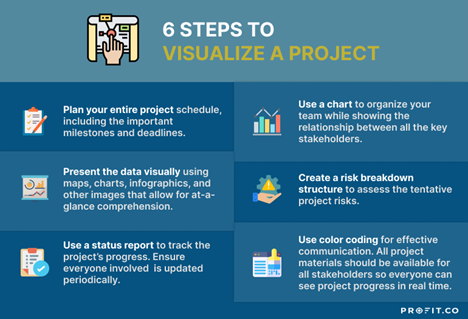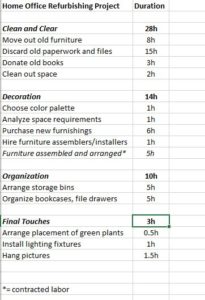Understanding Enterprise Environmental Factors
Critical elements in strategic project management
As project managers, we can’t control everything. In every project there are factors beyond our control that can have both large and small effects on the outcome of a project. Market demands, consumer tastes, corporate culture, even the weather, are all factors that can make a difference between project success and project failure. While these are things we can’t change, we still need to be aware of the elements within our operating environment and what they mean to the projects we manage.
Enterprise Environmental Factors
Enterprise Environmental Factors (EEF’s) are conditions, not under the immediate control of the project team, that influence, constrain, or direct the project, program, or portfolio (Project Management Institute, 2021). These are things that are beyond the control of the project team, and often the organization in which the project is taking place, that can have effects on the outcome of the project. Projects take place in settings that can have effects, both positive and negative, on them. Those factors can exist both inside of the company initiating the project as well as outside of it. An organization and project team need to identify and consider those factors in order to increase the chances of project success (Arif-Ud-Din, 2020).
Strategic management is the systematic analysis of the factors associated with the external and internal environments of an organization to provide the basis for maintaining optimum management practices (Thompson, 2010). It means understanding what is going on both inside and outside of an organization in order to make better plans and decisions about what to do. Simply put, strategy is deciding what to do to achieve your goals given what’s going on in the environment around you. Strategic project management means the same thing; making decisions about actions to take in order to achieve your project goals and objectives in consideration of the environment in which the project is taking place.
Just as in general business activities, the operating environment of a project includes both the internal and external environments. The internal environment includes everything within the organization; organizational structure, procedures, company culture, and so on. The external environment is the environment outside of the organization and includes everything from customer tastes to legal restrictions, even the physical environment.
In summary, EEF’s are environmental factors, both internal and external, outside of the control of a project team that can have both positive and negative impacts on project results. The chances of successfully completing a project are increased by strategically considering EEF’s in managing a project.
Addressing EEF’s in Projects
Because every project has at least some EEF’s affecting the outcome, every project manager needs to deal with and address those factors in each project that they manage. All of the major project management methodologies and approaches have their own prescribed steps for addressing environmental factors, but when looked at as a whole, most of them recommend taking the same three steps: 1) Identifying the factors, 2) assessing them, and 3) planning for them. Based on experience and best practices, this is also the recommended approach to take in addressing the issue of EFF’s in managing projects. The overall goal is to strive for having a clear understanding of the project environment in order to be better able to pursue, and achieve, the objectives of the project.
Step 1: Identifying Enterprise Environmental Factors
From formal and structured assessments to informal examinations, several different methods exist for identifying EEF’s for every project. The depth and complexity of each method may vary, but the overall goal is still the same, which is to develop as complete of a listing as possible of potential factors in the project environment beyond the control of the project team which may have effects on the outcome of the project.
Here are a few examples of ways to identify EEF’s in projects
PMI List of EEF’s
The Project Management Institute takes a formal approach to identifying enterprise environmental factors. The table below examines both internal and external factors to be examined as inputs into various project development and execution stages.

SWOT Analysis
Performing a SWOT analysis is a good way to identify EEF’s in a project. While it is not a categorical list, as provided by the PMI list mentioned above, it does force a project team to examine elements of both the internal and external project environments. In doing so, a list of EEF’s emerges and can be identified.

One advantage of using this tool to identify EEF’s is that SWOT analysis is very well known and understood by most people, which makes it much easier to conduct.
Advertisement
[widget id=”custom_html-68″]
PESTLE Analysis
A more rigorous, but still approachable and usable analysis, is PESTLE. PESTLE is an acronym standing for six macroenvironmental factors to examine that can be used in performing an industry analysis.
| P | Political |
| E | Economic |
| S | Social |
| T | Technological |
| L | Legal |
| E | Environmental |
Just like SWOT, the dimensions of the PESTLE analysis are not a categorical list of environmental factors in itself, but performing the analysis also helps to identify the various EEF’s that will affect a project.
Other Methods
Several other structured methods for market and environmental analysis exist; too many to develop a definitive list. For market analysis, Five Forces analysis can be useful. If culture is playing a factor in an international project, cultural dimensions such as those from the Hofstedde Institute or the GLOBE project might be useful.
More important than the tool or framework used to evaluate the project or market environment is the ability to identify the factors and how they might affect the projects chances for success.
Step 2: Assess the Identified Factors
With the list of factors in hand, the next step in the process is to asses each one. The depth of the assessment will strongly depend on the needs of the individual project, but the following list can help to provide a basis for assessment that can be built on as necessary.
Each factor should be identified as internal or external to the organization conducting the project. This asks the question, are the factors affecting success coming from inside or outside. Does the identified factor increase or decrease the chance of project success? This means identifying it as positive or negative. A factor can also be rated as neutral if it is simply an item for consideration in managing the project without any inherent positive or negative direct effect. Is the factor stable or changing? Assessing the stability of the factor means to examine if it will remain constant or if it is likely to change during the course of the life of that particular project. Finally, any additional comments on the impact that factor might have on the project should be noted.

Step 3: Plan for the Factors and their Effects on the Project
Finally, based on the assessment of the identified factors, project managers are in a better position to plan for managing the project in consideration of those factors. Negative factors can be mitigated as best as possible. Positive factors can be potentially taken advantage of to increase the changes of project success. Factors likely to change throughout the lifetime of the project can be scheduled for reassessment as needed. Other impacts can also be considered as appropriate for each factor.
Developing a full understanding of a project environment and considering the potential impacts on project processes and outcomes is an important part of strategic project management. Projects are unique, and so are the environments in which they operate. Those environments are also likely to change as time goes on. The ability to consider the project environment is a tool that every project manager should develop and be able to use.








